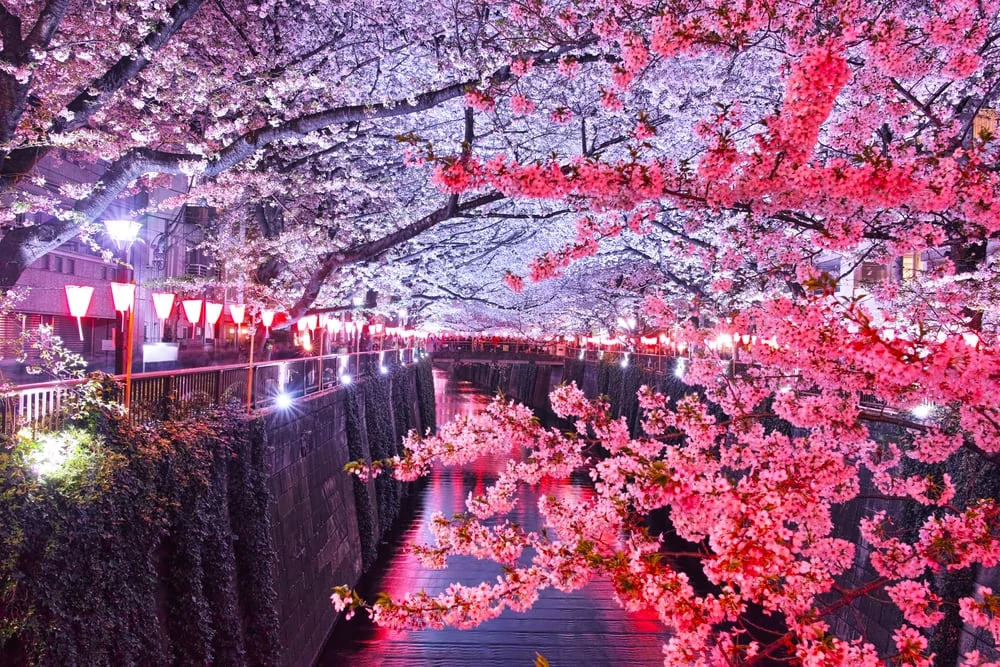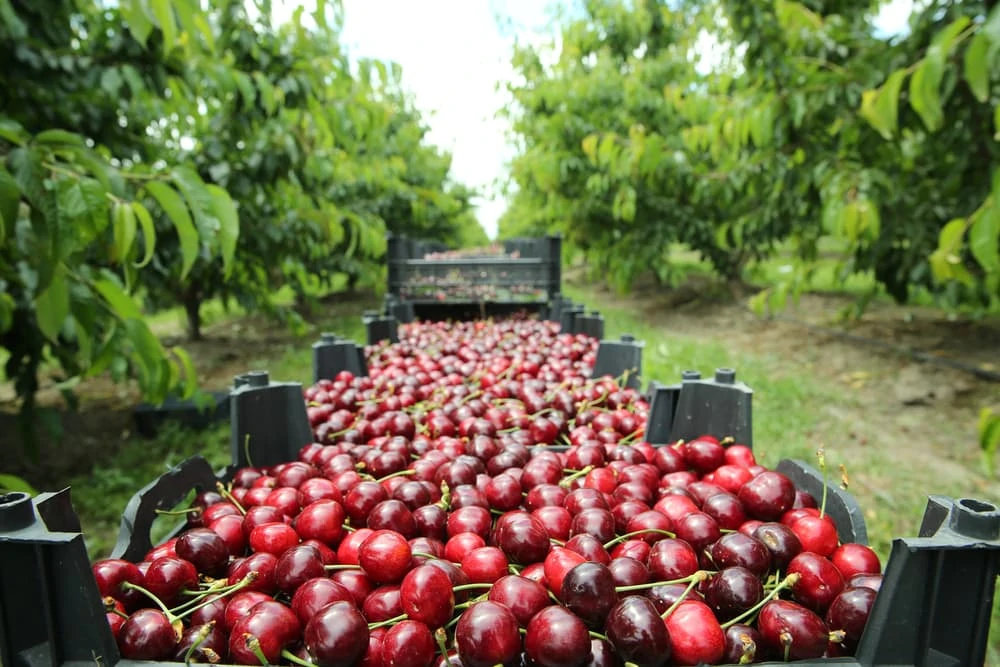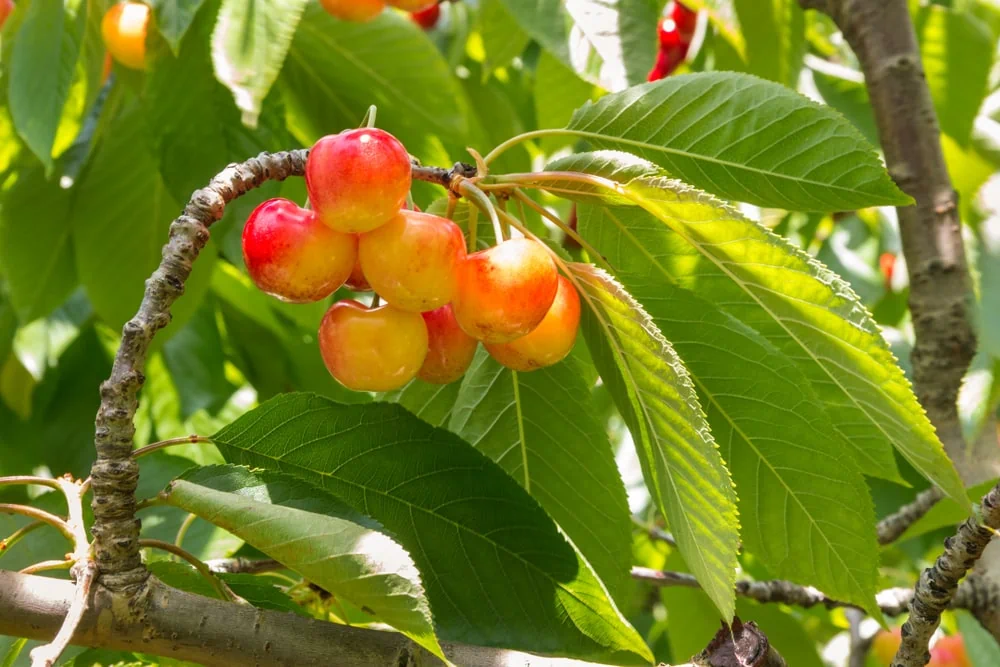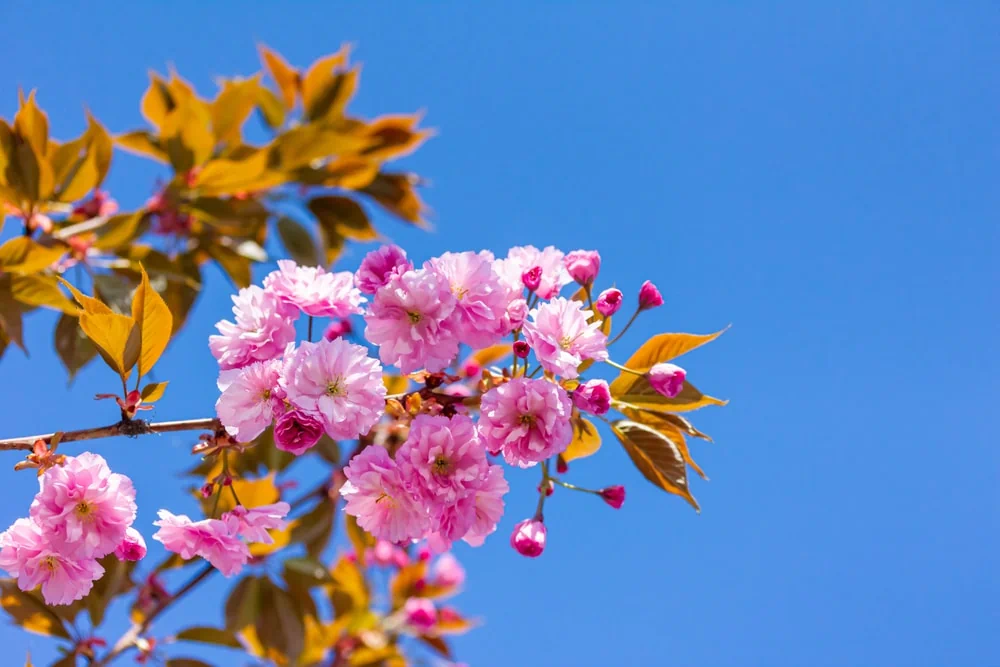
The cherry blossom is the most beautiful thing on Earth, right? With their tiny white blossoms giving us second snow following the winter flurries, these harbingers of spring usher in the days of flowering in an immaculate style.
The first time I encountered a wild cherry tree on a trek, I recall it vividly. The white petals broke away in the wind and drifted down on me as I stood beneath the deep boughs. They tumbled to the ground, like pebbles on a path in a fairy tale, gleaming like moonlight coins against the dark soil.
That climb was decades ago, and I keep an eye out for those ghostly white-blossomed wild cherry trees every year, beckoning me with their brilliant limbs like spirits in the forest. I give the boughs a little shake to make sure they’re receiving the petals, and I enjoy it.
This cherry, rather than a natural grower, was most likely a sweet cherry from an historic farmstead that is now overrun with young forest. The United States has a small number of Prunus species. The majority of the Prunus genus is found in Europe and Asia. The ornamental types, as well as many of the stone fruits we know and adore, were imported from across the sea.
Cherry Trees US Origin

The gift of 3,000 cherry trees to the United States in 1912, a gesture of friendship from Japan that is commemorated to this day during the annual National Cherry Blossom Festival, was possibly the most well-known Prunus import.
With numerous twists and turns, an entire mini history of international diplomacy was created as a result of that exchange. It wasn’t as simple as most people think. The iconic cherries of Washington DC may never have been realized without the motivational presence of a few empowered women.
Throughout the years, our two countries have exchanged numerous gifts and tokens, reaffirming our relationship’s perpetual dedication. Japan provided our country’s capital with the gift of thousands of trees, giving the cherry blossom a pride of place in both our culture and their own.
Cherry Tree as a Real National Treasure

The 3,000 trees contained several varieties. Some were planted on the White House lawn, many in East Potomac Park, and the beautiful froth of blossoming yoshino trees along the Tidal Basin remains a breathtaking scene, perhaps the most beautiful display of cherry trees in the nation.
A whole trail of gifting and annual pageantry has followed from this historic gift between Japan and the United States. The annual grandeur of these transient blooms, which feature delicate blossoms with a subtle subtext on the fragility of international peace, draws visitors. The shared experience of these long-lived trees keeps the spirit of friendship alive.
Cherry Trees Cultural Symbolism

The cherry tree is held in high regard throughout Japan, perhaps nowhere else on the planet. The Japanese people have adopted the cherry blossom, or sakura, as their cultural emblem, despite the fact that Chrysanthemum is Japan’s official flower.
Throughout its peak blooming season, when individuals walk beneath the flowering branches for hanami, or “cherry blossom viewing,” the cherry tree is regarded and celebrated.
The cherry blossom is a popular cultural icon in Japan, signifying the transient and perfect beauty of life with a bitter reminder that nothing beautiful can last. This somber yet lovely traditional Sakura folk song captures the depth and sadness of the subject.

The Jindai Zakura, the eldest of the three at a whopping 2000 years old, is followed by the Usuzumizakura, which is 1500 years old, and finally by the exquisite Miharu Takizakura, whose name literally means “waterfall cherry tree.”
Special Names for Cherry Trees
Regardless of where cherry blossoms are blooming, the Japanese have specific phrases that capture their season.
1. Sakura Tree

A picnic and blossom-hunting under branches in full bloom are what could be more smile-inducing than a cherry blossom? The word means “cherry blossom,” but its root is “saku,” which means “bloom” or “smile.”
2. Sakura zensen

The wave of flowers that swept Japan was given this name. The Japanese Meteorological Agency offers a prediction of probable bloom times each year, and it is regarded in the same way that a weather front is.
3. Hanafubuki

It literally means “flower snow storm,” based on the root terms “hana” meaning “flower” and “fubuki” meaning “snowstorm.” It refers to the moment when the wind pulls the petals off, scattering them across the sky. Cherry blossom blizzard is a common moniker for it.
3. Yozakura

Flower viewing places are frequently strung with stunning paper lanterns to enhance the nighttime viewing of the cherry blossoms. Hanami is a flower viewing place that means “after dark.” It is derived from the root word “yoru,” or “night.”
When immersed in Japan’s centuries-old custom of cherry viewing, the idea of a flower language takes on a whole new dimension. Although the cherry is relatively new to the United States, we have embraced its beauty and usefulness.
Three Festivals Related to Cherry Trees
Cherry blossom viewing, known as hanami in Japan, takes place whenever the cherries are in their peak bloom. You may make your own hanami experience right here in the United States, whether you’re traveling to Japan to see the flowers.
From your own yard to the local arboretum or u-pick orchard, but there are some particularly festive locales around the country where the cherry blossom is especially celebrated. The following are a few of the most well-known:
1. National Cherry Blossom Festival, Washington DC
(March to April)

The National Cherry Blossom Festival is the perfect place to celebrate cherries in this nation, whether you paddle a paddle boat through the historic Tidal Basin or do virtually everything else via a virtual tour of one of the many monuments surrounded by blossoms.
The Stone Lantern Lighting Ceremony, Blossom Kite Festival, and National Cherry Blossom Parade are just a few of the events that are usually included in the festival. Bloom Watch, provided by the National Park Service, can help you time your journey.
2. International Cherry Blossom Festival, Macon, GA
(March)

Macon, Georgia is known as the “Cherry Blossom Capital of the World,” with 350,000 Yoshino cherry trees. This is a sweet extravaganza with a carnival midway and food trucks serving pink-hued delicacies of all kinds.
3. Sakura Matsuri Cherry Blossom Festival, Brooklyn, NY (March to April)

While the coronavirus epidemic in the United States in 2020 has forced the cancellation of this important cultural celebration held at Brooklyn Botanical Gardens, there is optimism that it, along with many other lost yearly events, will be resurrected to its former glory in years to come.
The festival is named after the numerous Sakura Matsuri cherry festivals that exist throughout Japan, and which have traditionally included a variety of cultural performances involving Japanese folk dance and taiko drumming. Visitors are welcome to come to the Brookly Botanic Garden and admire the cherry blossoms, despite the fact that this year’s festival has been canceled.
Guide to Cherry Tree Identification

Along with a couple of different types of familiar fruits in the genus Prunus, cherry trees belong to the Rosaceae plant family. The cherry is closely related to the apricot, plum, peach, and almond, and they are often referred to as stone fruits because of their hard pits. The flowering fruit trees in the Prunusgenus are adorned with similar displays of spring blossoms, which confirm their close relationship.
The following are common characteristics of the cherry tree (Prunus) cultivars, many of which are useful in identifying the cultivar:
1. Drupe

The fruit’s flesh is covered by a hard shell, or stone, that protects the fruit’s seed.
2. Flower

Five petals and five sepals, ranging in hue from white to deep pink, make up the flower.
3. Bark

Typically, plated or scaly bark with a satiny finish that ranges from gray to reddish hues.
4. Leaf

A variant with a serrated border around the outside of the leaf.
3. Toxin

Cyanogenic glycosides, which are poisonous to humans and most animals, with the exception of deer, may be found in the tree’s bark, leaves, and seeds.
The lovely aesthetic blooms, nutritious fruit, and valuable log of these trees are all coveted commercially. Furniture, cabinetry, and flooring are all made of cherry. Cherry wood is the finest quality and least expensive hardwood, and it’s often used to create beautiful furniture.

Cherry Tree Types: Edible vs Ornamental

The edible and ornamental cherry trees are two types of cherry trees that may be distinguished. While the value of edible cherries is self-evident, flowering cherry trees picked simply for their flowers add beauty and elegance to any landscape.
From native trees such as the black cherry and chokecherry to cultivated edible cherries in orchards across the United States to the abundance of imported gems in our nation’s capital, our history holds a unique significance for both. Both economically and culturally, the cherry tree is a significant presence in our nation, with its blossoms, fruits, and wood being treasured.
Edible Kinds of Cherry Trees

Cherries, which ripen in late spring, are among the first fruits to harvest. Sweet or sour may be separated from the edible group. Cherries may be eaten sweet or tart, and they have a range of culinary applications from pie and cake to preserving for those winter sweet summertimes.
Cherries come in both sweet and sour varieties. Certain cultivars’ higher acidity contributes to the brightness of cooked or baked cherry desserts, giving them a biting flavor. Cooking also makes the tart cherry’s sweetness more palatable by concentrating it.
From the nostalgia of cherry picking and cherry pies in the summertime to whole-body benefits with a vast range of systemic effects, sweet and tart cherries cover the whole gamut of cherry goodness.
As studies have highlighted the potential of cherries as a superfood, they have become even more popular. You may feel free to reach up and pick a handful of these lovely sweets and snack to your heart’s content, as there is a long list of benefits.
Cherry Picking

Mid-June is traditionally when cherry picking season starts. The challenge is learning how to extract the fruit at its peak cherry condition. Picking each cherry at its exact moment of ripeness is a bit of an art because the cherry fruits ripen at different times on the tree.
Cherries don’t ripen off the tree, unlike some other stone fruits. The cherry’s flesh should be solid and lusterous. The biggest, brightest cherries in each cluster are the best option since they get bigger and their color darkens as they mature. To protect the delicate flesh of the cherries, place them gently in a picking basket.

If you’re not going to eat the cherries right away, be sure to choose the stem. Picked cherries have a longer shelf life when the stem is left intact. The stem should come off quite easily if the cherry is mature. When pulling forcefully, make sure to avoid damaging the tree.
Best Types of Cherry Trees Variaties With Pictures
The quality of a cherry varies. The top three cherry varieties are: These two products have a flavor profile and health benefits that cannot be beat. Each one has its own set of advantages and disadvantages. Snacking on sweet cherries is best, and baking and preserving with tart cherries.
1. Bing Cherry Tree (Prunus avium)

This delicious fruit, which is eaten right off the tree, is by far the most popular kind of edible cherry. This tree is widely grown and tops the list of over a thousand sweet cherry cultivars. This prolific cherry tree continues to be the benchmark by which all other cherries are judged, with upwards of 50 to 100 pounds (23 to 45 kilograms) of cherries produced each year.
This delightful stone fruit has more to it than meets the eye. The origins of the bing cherry are entwined with westward expansion, racism, and abolitionist history. The tree has its roots in the early beginnings of fruit farming in Oregon. The story behind the bing cherry’s legacy, and its namesake Ah Bing, is full of mystery and more.
This species is an early blooming variety with fragrant white flowers. In mid-June, the fruit is ready to be picked. As a wild cherry, this species may be found growing. The tree’s glossy satiny bark is intermingled with tiny rough streaks and is unusual in color.
This variety creates fragrant white blooms and is an early bloomer. In mid-June, the fruit becomes ripe. This species may occasionally be found as a wild cherry. The tree’s rough reddish bark has a satiny sheen and is interspersed with tiny rough streaks.

The firm purple-red flesh and semi-free stone make these huge, luscious heart-shaped fruits easier to pit. The Bing cherry is without a doubt the finest eating cherry, whether it’s for instant hand-picked pleasure or long-term preservation.
USDA zones: 5 to 8
Height: Up to 35 feet (11 meters), or 15 feet (4.6 meters) for dwarf variety
Exposure: Full sun
2. Montmorency Cherry Tree (Prunus cerasus)

The Montmorency Valley in France, near Paris, is where this tart beauty gets its name. The fruit’s bright red skin contrasts with the yellow flesh, which has a robust tangy flavor that holds up well in cooking. The perfect cherry for a pie. They’re often marketed as dried cherries and are the most common selection for baking.
The trees’ yearly productivity is well-known. In late June, they produce abundant white blooms that are ready to pick. Wildlife finds this variety to be quite appealing. Cover the tree with netting before the fruit becomes ripe to protect your harvest.

This is a cold-climate species that enjoys these temperatures. Michigan produces around 90,000 tons of the United States’ crop. Montmorency trees are self-fertile, so planting two or more trees yields a better harvest, but only one tree is required for blooming and fruit. They’re the country’s most popular tart cherry cultivar.
USDA zones: 4-7
Height: Up to 24 feet (7.3 meters), or 10 feet (3 meters) for dwarf variety
Exposure: Full sun
Edible Cherry Tree Types
Other well-known types, each with their own unique qualities, are commonly consumed as well. There is always more to explore with over a thousand cherry types. The cherry cultivar might take your whole life to find. A list of interesting edible cherries, from sweet to sour, is given below.
3. Rainier Cherry Tree (Prunus avium, ‘Rainier’)

A cross between the Bing and Van cherries, this super sweet early-fruiting variety is hard to find. The fragrant pink-white flowers mature into a lovely fruit with a rosy blush. Rainier is named after Mount Rainier in Washington state, where it originated. The inner flesh is white, giving it the moniker “white cherry.”
As early as May, the enormous fruit might be harvested. These cherries are not as appealing to birds as those are, perhaps due to their yellow hue. Birds are deterred by netting the tree. They do need a additional pollinator, although they generally produce a huge yield. These trees’ autumn foliage is another plus.
USDA zones: 5-8
Height: Up to 35 feet (11 meters)
Exposure: Full sun
4. Morello Cherry Tree (Prunus cerasus, ‘Morello’)

These sour fruits are the most popular culinary cherry in the United Kingdom, according to a centuries-old variety. They are utilized for preparing, baking, and liqueur production all over Europe. Morello cherry juice is traditionally used to make Kirsch, a well-known cherry flavored brandy.
They make a excellent pollinator for other kinds of cherries because they self-fruit. From spectacular blossoms that last longer than most other cherry blossoms, these dark cherries ripen in late June or even July.
USDA zones: 4-9
Height: Up to 20 feet (6 meters), 10 feet (3 meters) for dwarf variety
Exposure: Full sun
5. Lapins Cherry Tree (Prunus avium, ‘Lapins’)

Another popular option is semi-dwarf sweet cherry ‘Lapins,’ which produces a large crop as well. It’s a poor choice as a pollinator for other types, but it does not need one. It was first introduced to the market in the 1980s and quickly grew in popularity until it was eventually ousted due to poor shipping quality.
Dr. stands for Doctor, and the name is named after him. This variety was developed in British Columbia by Latvian horticulturist Charles Lapins. This large fruit resists cracking, and it’s a sweet cross between Van and Stella varieties. Cherries are ready to eat fresh off the tree or for culinary purposes in early June.
USDA zones: 5-9
Height: Up to 40 feet (12 meters)
Exposure: Full sun
Ornamental Cherry Tree Varieties
6. Yoshino Cherry Tree (Prunus x yedoensis)

Due to the gifting of trees from Tokyo to the US government, as well as its popularity in both the national and international cherry festivals, it’s also known as the Japanese flowering cherry.
Humans can’t swallow the black, bitter fruit, but birds do. The trees’ pink buds create a pink cloud of mist that gives the appearance of a fog. In late March and early April, an early bloomer, it produces a delicate almond fragrance with a profusion of white-pink blooms.
USDA zones: 5-8
Height: Up to 50 feet (15 meters)
Exposure: Full sun to partial shade
7. Kanzan Cherry Tree (Prunus serrulata ‘Kanzan’)

This is one of the frilliest, brightest cherries around, with dark pink double blooms. This cultivar is one of the two principal decorative cherries sent to the US by Tokyo, and is frequently referred to as Japanese cherry or oriental cherry.
The tree has increased in popularity and is now one of the most popular landscape cherries on the market since arriving on our shores in the early 1900s. The full double blossoms and bronze to golden foliage of this cherry tree make it one of the most beautiful.
USDA zones: 5-9
Height: Up to 40 feet (12 meters)
Exposure: Full sun or part shade
8. Weeping Cherry Tree (Prunus subhirtella var. ‘Pendula’)

The weeping cherry is another popular landscape option. With its pendulous pink flowers, golden fall foliage, and bronzed bark, it brings year-round beauty to its graceful boughs tumbling like a waterfall. In comparison to the Kanzan cherry, which lasts for around 40 years, it has a long life cycle.
USDA zones: 4-9
Height: Up to 30 feet (9 meters)
Exposure: Full sun to part shade
Cherry Trees For the Birds
While not as appealing to us, several fruiting kinds are coveted by wildlife of all types, especially birds. Pollinators, birds, and small animals all benefit from the flowers and fruit of this plant.
On the edge of edible and ornamental, these cherry trees dance. Although birds will enjoy the majority of these cherries, some may be used for food. They don’t have the same level of refinement in their floral displays as the Japanese flowers, but they’re still lovely.
9. Cherry Laurel Tree (Prunus laurocerasus)

This is a lovely shrub or hedge because of its dark oblong evergreen leaves and intoxicating bright flowers. English laurel or common cherry laurel are other names for this non-native. When crushed, the bark produces a cherry scent.
The fruit attracts birds, while the flowers attract bees and other pollinators. The color of red fruit changes to dark purple. While unpruned, trees may grow to be 40 feet tall, and are routinely trimmed as high as 20 feet.
USDA zones: 6-9
Height: Up to 40 feet (12 meters)
Exposure: Full sun to part shade
10. Carolina Cherry Laurel Tree (Prunus caroliniana)

A hedge of this native Southern evergreen bush is common. In the spring, it produces white blossoms that contrast with the dark, glossy leaves. When crushed, the new leaves give off a cherry fragrance. Carolina cherry, mock orange, and wild peach are some of the other names for this plant.
In the 1950s, this variety was widely planted in Texas, but several of them perished due to borers after a dry early in the decade. The attractive black berries attract a wide range of birds, but they also create a short-term litter concern.
USDA zones: 7-10
Height: Up to 40 feet (12 meters)
Exposure: Full sun to part shade
11. Bird Cherry Tree (Prunus padus)

This tree bears tiny red cherries that turn nearly black and is also known as hackberry, hagberry, hogberry, black dogwood, and May Day tree. The fruit is bitter and inedible to humans, despite the fact that the berries have been utilized to make a wool dye.
In April and early May, almond-scented blossoms appear on pendulous racemes, or stalks. Pollinator species find these early blooms to be quite important.
On the petiole, or stem, of each leaf are special nectar glands. The insect repellent produced by these glands attracts insects that feed on cherry leaf pests, which is a clever defensive strategy.
USDA zones: 3-6
Height: Up to 40 feet (12 meters)
Exposure: Full sun to part shade
12. Pin Cherry Tree (Prunus pensylvanica)

This cultivar, which can be found in meadows and woodlands, heralds the arrival of spring with its branches crowded with tiny white blooms. It’s a fast-growing tree, and its use in reforestation after fires gave it the name fire cherry.
It produces many tiny red cherries when it is grown as a shrub or small tree. Birds and animals adore the small red fruits, and they may be used to make an edible pin cherry jelly, despite being too bitter for humans.
USDA zones: 3-8
Height: Up to feet 30 (9 meters)
Exposure: Full sun to part shade
13. Chokecherry Tree (Prunus virginiana)

This native grows as a shrub or small understory tree and is commonly referred to as bitter-berry, Virginia bird cherry, and black chokecherry. Several pollinators, including the tiger swallowtail and several moths, are drawn to its fragrant blossoms.
The fruit of this tree is too bitter for humans to eat straight off the tree, but birds adore it, just like the bird cherry. Several Native American tribes utilized this natural wild cherry variety. It was utilized as a cold remedy and a nutritious part in pemmican, among its numerous uses.
USDA zones: 2-7
Height: Up to feet 30 (9 meters)
Exposure: Full sun to part shade
14. Black Cherry Tree (Prunus serotina)

Lastly, there is the black cherry. The black cherry, sometimes known as wild cherry, adds its scent to the captivating blend of odors in the late April and May woodland. On racemes, white flowers bloom in clusters.
Jam and jelly makers as well as distillers use black cherry fruit to flavor brandy or whisky, despite its bitterness. The flowers are important for pollinators, and the birds like the little dark fruit.
USDA zones: 3-9
Height: Up to 80 feet (24 meters)
Exposure: Full sun to part shade
Forced Cherry Tree for Indoor

Forced cherry blossoms arrive in our home every year during the winter, bringing a lot of joy. If you reside in a region with a lengthy winter and a short growing season, clipping branches in the winter allows you to enjoy your cherry tree even earlier indoors.
Cherry tree twigs and leaves contain dangerous chemicals that may harm both humans and animals. When forcing branches indoors, be cautious if you have little children or pets. Make certain they are well out of reach.
The Beauty of Cherry Trees

All cherry species have worth, whether commercially bred or discovered in the woods. As a emblem of our relationship to other countries, as a resource for timber, and as a domestic food source for humans, birds, small mammals, and pollinators, the cherry tree touches every aspect of our lives.
The cherry tree gives its gifts, no matter the variety. You won’t be disappointed if you learn to know your closest cherry tree. Feed your spirit with cherries in the spring, and feed your body with healthy eating cherries in the summer. Spend some time looking at them. For years of cherry delight, see if you can find a favorite and add it to your own yard!
